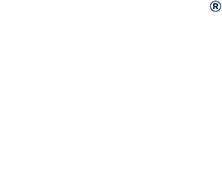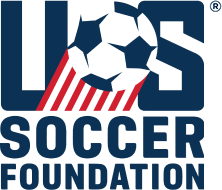
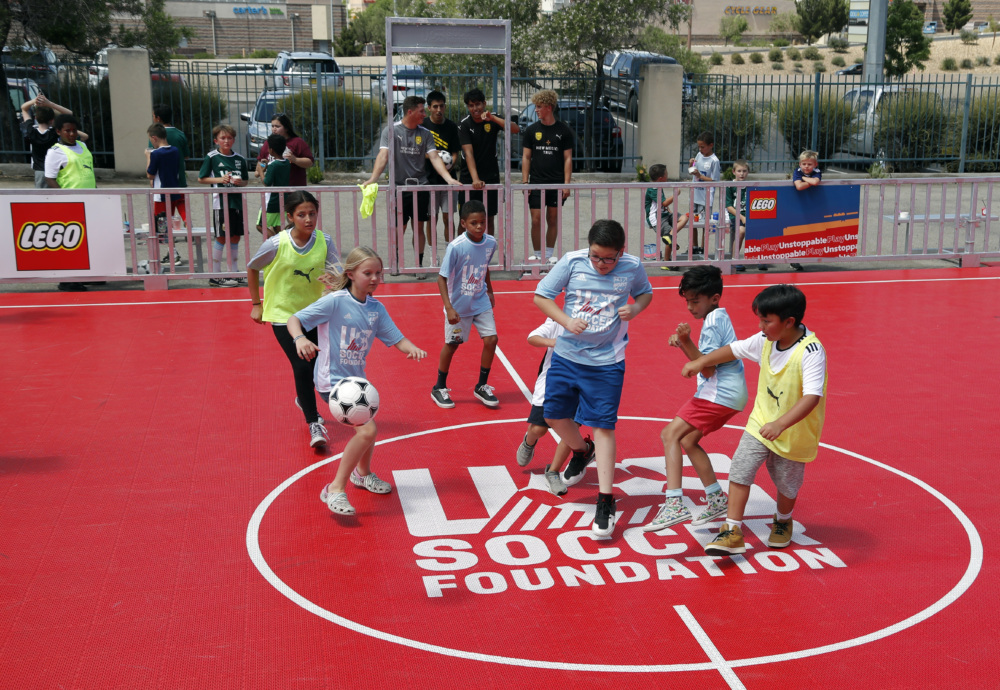
Let soccer do what soccer does.
Together, we can give millions of kids from underserved communities safe places to grow, thrive and build confidence for life.
After a troubling report on youth soccer participation numbers, it’s time for some good news …
As the world watched France defeat Croatia on soccer’s largest stage on Sunday, the conversation around the sport in the United States quickly shifted to a troubling issue at the other end of the spectrum—a reported decline in the rate of youth soccer participation here at home.
Youth sports in general have struggled to keep kids engaged in recent years. Soccer is no exception. Joe Drape reported in his New York Times piece that 6- to 12-year-olds playing soccer regularly dropped nearly 14 percent over the last three years and the sport has lost nearly 600,000 participants. The article points to several reasons for the decline. They range from a ‘pay-to-play’ system, which prices too many families and children out of the sport, to increased competition and pressure at earlier ages that can drain the fun out of the game. Yet, amid all this, there is some good news that isn’t yet widely known.
The U.S. Soccer Foundation has been able to stimulate significant growth in participation among children in underserved communities nationwide where poverty and a lack of infrastructure historically have presented significant barriers that limited access and opportunities to play. In fact, over the past three years as participation of 6- to 12-year-olds playing soccer reportedly dropped 14 percent, participation in our Soccer for Success after-school program saw an average year-over-year growth rate of 39 percent. Just last year, the program saw a year-over-year increase in participation of 64 percent. In the coming school year, we expect to engage 100,000 children.
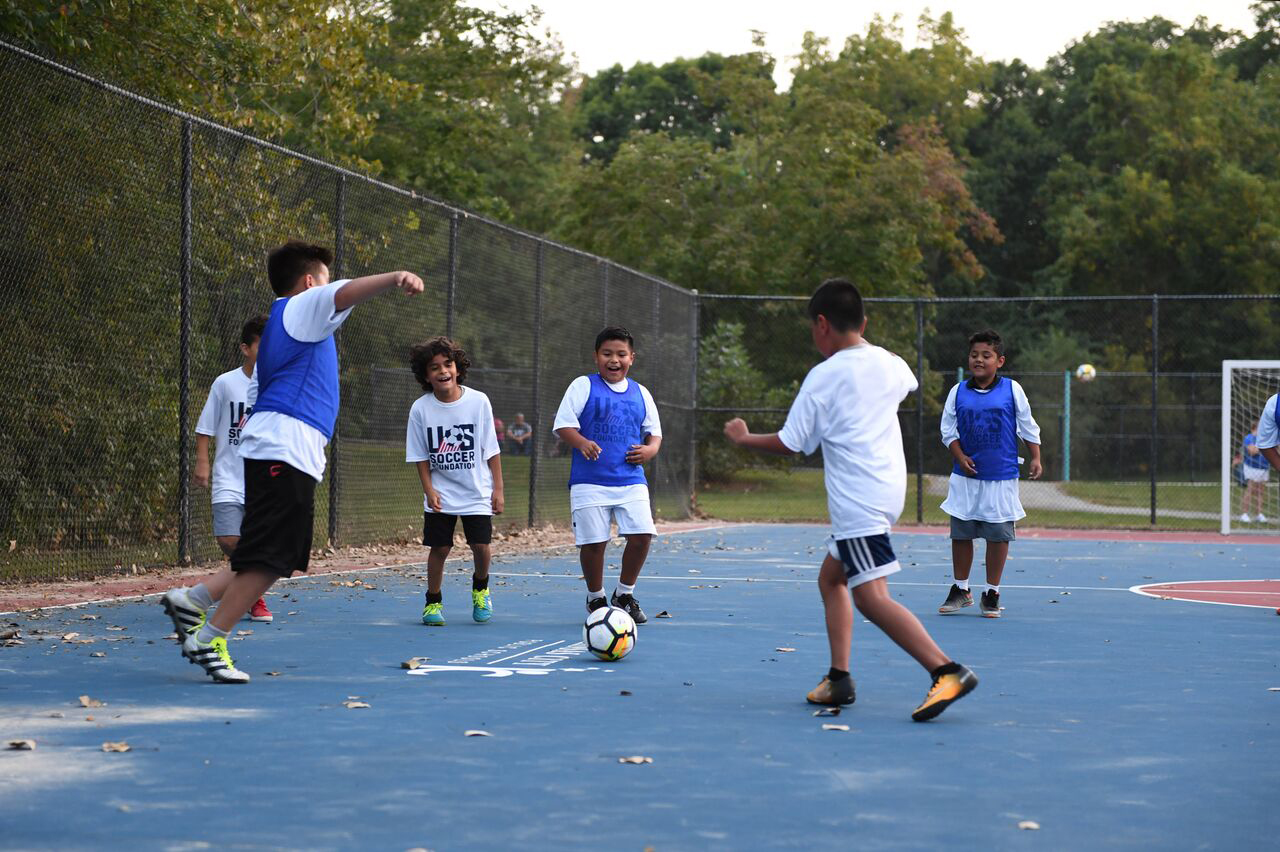
How is this happening while national trends are going in the opposite direction? With the help of a wide range of partners, we make sure that kids have easy and affordable access to a quality soccer program that is fun and engaging. Soccer for Success is offered free to participants and their families. The program focuses on small-sided games and practices are held at or close to schools. The Foundation and our partners also work to create safe places to play soccer in areas where play spaces have not been previously available.
Additionally, our coaches (whom we call coach-mentors) are specially trained to make soccer inclusive and engaging. There are no try-outs so all children have the opportunity to play. Soccer for Success coaches make the sport fun. Last season, 58 percent of participants were introduced to the sport for the first time through the program and 76 percent of participants said they liked soccer more because of their experience in Soccer for Success.
Here’s how Charli (Charlize) Valentin of New York’s East Side Community High School put it: “As an older high school student, I see within the middle school whenever I help out Coach Louis, there’s just so many kids who want to play soccer… Even the people who have been at East Side and have played a different sport or no sport at all, see that soccer is such an inclusive sport. I feel there is a bit more confidence in them to go out and try and be welcomed. That pitch really brought everyone together to see that this is a school that takes soccer seriously and wants success, not for just the sport, but for the students who play it too.”
All of the above is extremely promising, but there is a still a long way to go. The Foundation has set ambitious goals to achieve by 2026 when the FIFA World Cup returns to the United States: build 1,000 safe places to play and engage 1 million children a year in Soccer for Success.
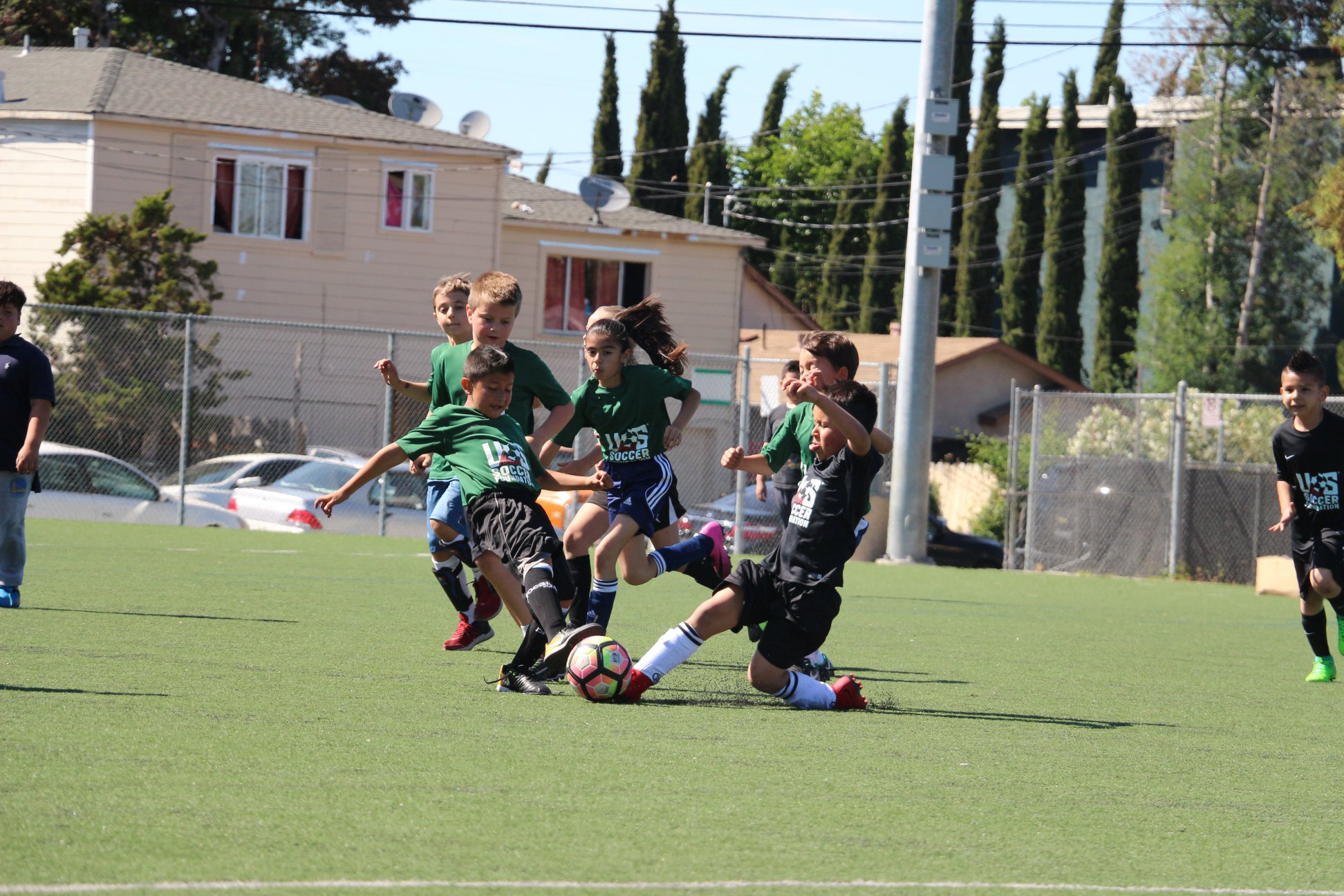
To be clear, we have not found a way to eliminate all the costs associated with delivering quality soccer programming and safe places to play. It will take considerable resources and cross-sector collaboration to achieve our 2026 goals. The good news is that a growing number of people and organizations see tremendous value in providing children in underserved communities with the access and opportunity to play our game. More importantly, they are willing to invest in making that a reality. Why? Because governments see value in keeping children active and engaged with coach-mentors during the critical after-school hours. Because charitable foundations see value in the positive health and youth development outcomes associated with participation in Soccer for Success and how the program helps strengthen communities. Because philanthropic individuals, particularly those who grew up playing soccer, recognize how much the game enriched their lives and want children growing up in less fortunate circumstances to have that same opportunity.
 The success seen to date results from a wide range of partners getting behind this effort. Target, adidas, Musco Sports Lighting, Major League Soccer, the Robert Wood Johnson Foundation, the California Endowment, government funders, and philanthropic individuals nationwide have come together to help create access and opportunity in underserved communities. Child-serving organizations nationwide are adopting and implementing the Soccer for Success model because they see value in the evidence-based outcomes that help kids develop on and off the playing field, aiding them in their mission in service to youth.
The success seen to date results from a wide range of partners getting behind this effort. Target, adidas, Musco Sports Lighting, Major League Soccer, the Robert Wood Johnson Foundation, the California Endowment, government funders, and philanthropic individuals nationwide have come together to help create access and opportunity in underserved communities. Child-serving organizations nationwide are adopting and implementing the Soccer for Success model because they see value in the evidence-based outcomes that help kids develop on and off the playing field, aiding them in their mission in service to youth.
To achieve our 2026 goals, we’ll need the support of everyone in the soccer community—and beyond—to continue to expand access to the game. It will require non-traditional partners, policymakers, parents, and soccer fans to play whatever role we can to ensure that children—especially those in underserved communities—can play and benefit from this incredible game.
We need to make soccer everyone’s game. Let’s get to work. Join us at itseveryonesgame.org to learn more about our efforts and to become part of a national movement that will change the landscape of soccer in America.
